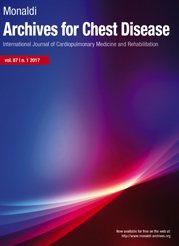Epidemiology and clinical outcomes of non-COVID viral respiratory infections in children from a low-middle-income country
All claims expressed in this article are solely those of the authors and do not necessarily represent those of their affiliated organizations, or those of the publisher, the editors and the reviewers. Any product that may be evaluated in this article or claim that may be made by its manufacturer is not guaranteed or endorsed by the publisher.
Authors
Acute lower respiratory infections are one of the leading causes of morbidity and mortality in children globally. There is a lack of data reflecting the true burden of viral lower respiratory tract infections from low-middle-income countries like Pakistan. This study aims to describe the epidemiology and outcome of viral lower respiratory infection. This was a cross-sectional and retrospective study carried out from January 1, 2019, to December 31, 2021. We identified 13 different non-COVID viral respiratory pathogens. The statistical association was assessed between different factors, i.e., viral respiratory pathogens, with invasive and non-invasive mechanical ventilation, inotropic support, and mortality. A p-value of <0.05 was taken as significant. Among 234 patients, 187 (80%) had positive viral polymerase chain reaction (PCR). Males were predominant (n=137, 58%). The most common respiratory pathogen was the respiratory syncytial virus (RSV) (n=62, 26%), followed by entero/rhinovirus (n=24, 10%). Half of the patients (n=92, 50%) had a pediatric intensive care stay, and all required non-invasive mechanical ventilation (hi-flow). One-fifth of patients (n=34, 18%) required invasive mechanical ventilation and inotropic support. Overall, 8 (4%) patients with positive viral PCR died during the hospital stay. All the patients had associated comorbidity. RSV is the most common respiratory pathogen identified. Non-invasive mechanical ventilation, particularly high-flow therapy, is crucial in managing patients with viral illnesses, though a subset may still require invasive support. These findings highlight the importance of preventive strategies, including vaccination, which could significantly reduce the burden of viral infections, minimize the need for intensive care interventions, and lower morbidity and mortality.
Ethics Approval
The authors obtained Institutional Review Board approval (ERC# 2022-6953-20414).How to Cite

This work is licensed under a Creative Commons Attribution-NonCommercial 4.0 International License.






